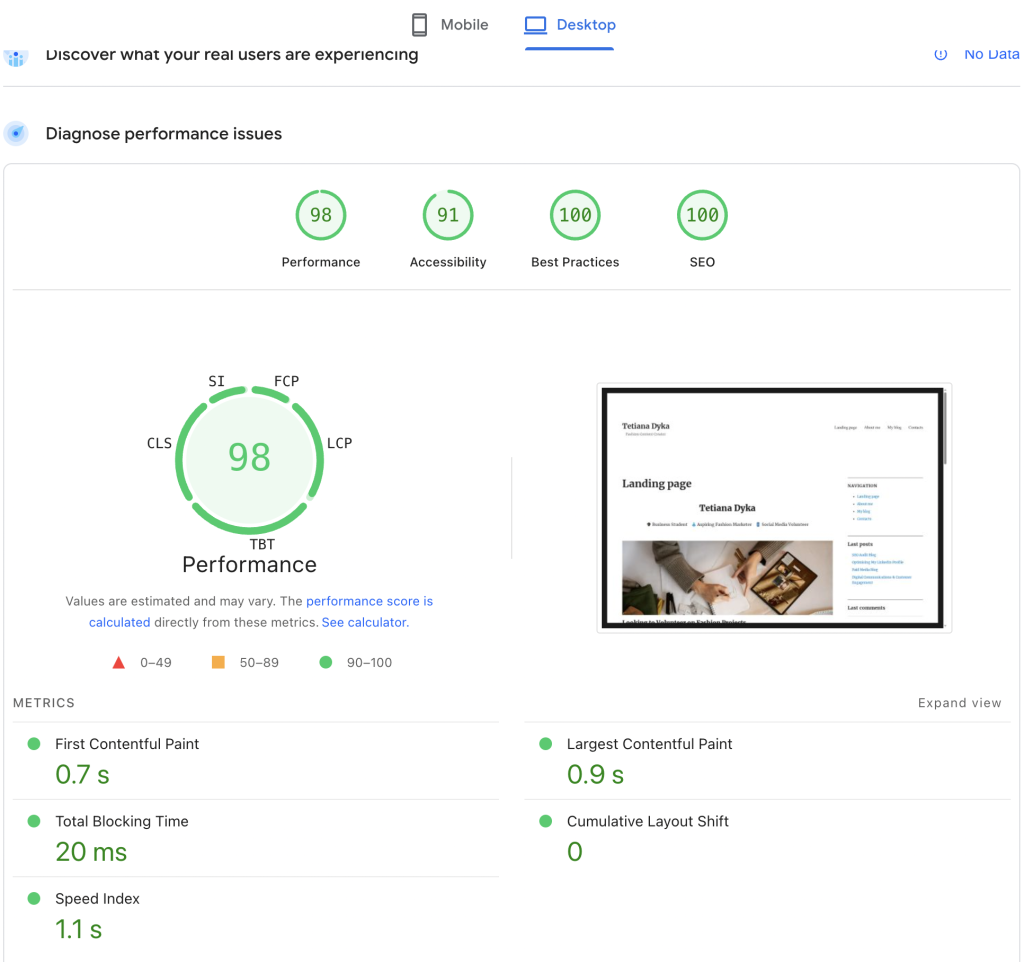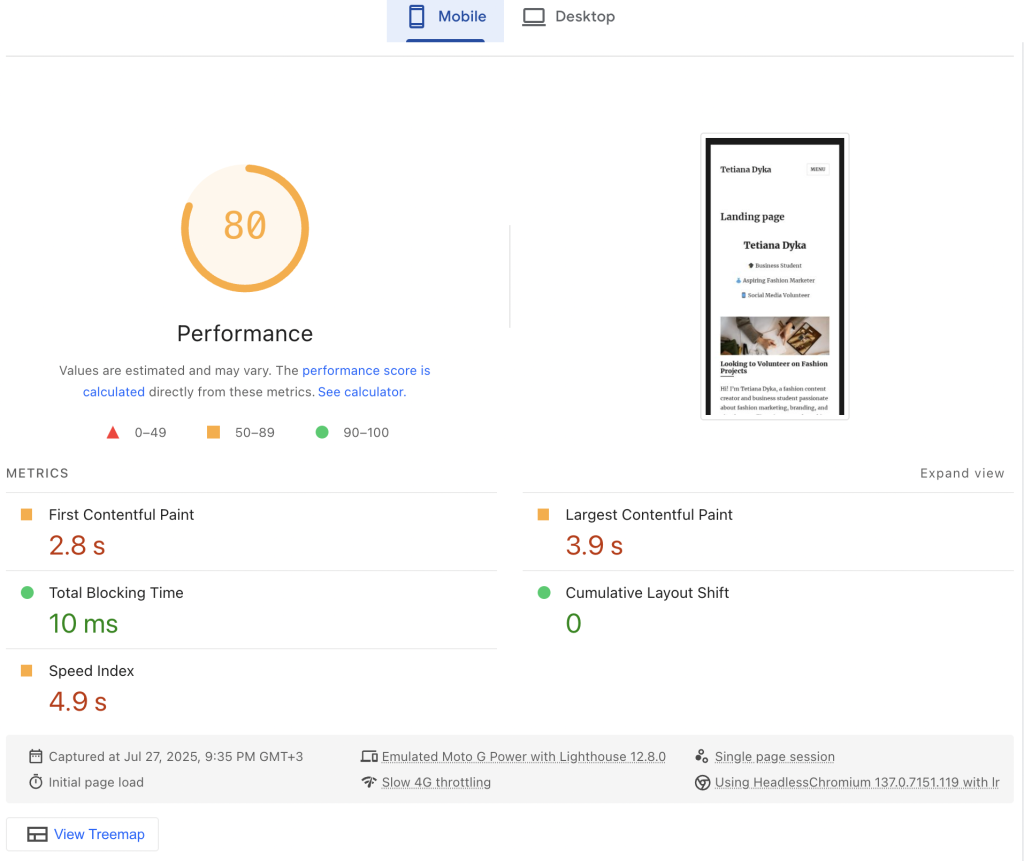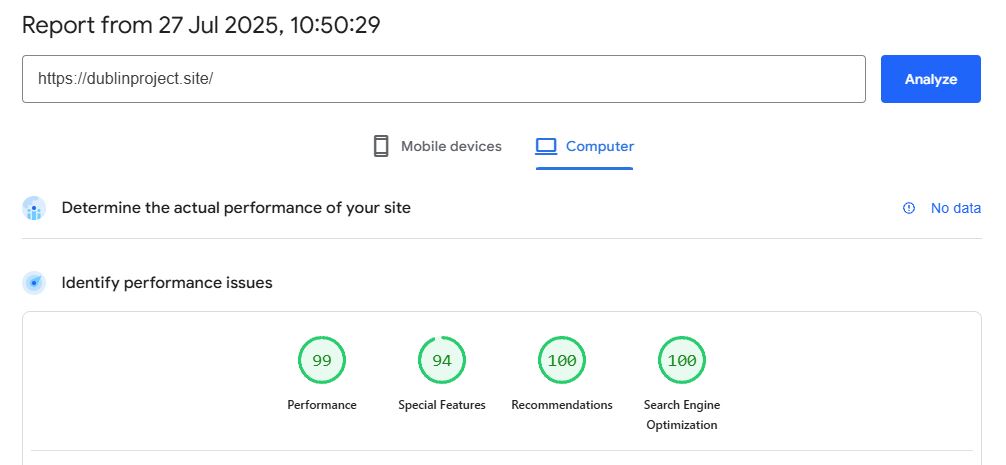To improve my website, I completed a full SEO audit using tools like Google PageSpeed Insights and an SEO plugin installed on WordPress. The audit helped me understand what was working well and what needed to change. At first, the website had some strengths. It was mobile-friendly, the layout was clean, and important pages like “About” and “Blog” were easy to navigate. Some pages already had meta titles and descriptions, which is good for search engines.
However, the audit also showed several weaknesses. Many pages had short content and were missing important keywords. This made it harder for people to find the site online. The audit also found broken links, missing image alt texts, and large image files that slowed down the site. There weren’t many backlinks from other websites, and the site had little social media engagement. I also noticed that some technical SEO elements were missing, such as proper meta tags and Open Graph data for social sharing.
To fix these problems, I used a combination of tools. First, I used an SEO plugin (such as Yoast SEO to help improve meta titles, meta descriptions, and content structure. This made it easier to optimise pages for keywords. I also went into the header.php file of my WordPress theme and added custom meta tags and Open Graph tags manually. This helped improve how the site appears when shared on social media platforms.
I updated the content on key pages like “About” and blog posts by adding more keywords and useful information. I also improved the meta titles and descriptions to make them more relevant and attractive in search results. On the technical side, I removed or redirected broken links, added image alt texts, and compressed large images to make the site load faster. I published two new blog posts and added social media share buttons to the blog section. Then I promoted the posts on LinkedIn and through my network. Finally, I started contacting other bloggers and websites to begin building backlinks.

 After these updates, I ran the SEO audit again. The site health score improved from about 68% to 84%. All broken links were fixed, and the technical SEO issues were mostly solved. The PageSpeed Insights score for mobile increased from 77 to 80, and the desktop score remained high at 98. This shows that the site now loads faster and performs better. Content improvements also helped some pages appear more often in Google search results. The blog posts received more views and shares compared to before.
After these updates, I ran the SEO audit again. The site health score improved from about 68% to 84%. All broken links were fixed, and the technical SEO issues were mostly solved. The PageSpeed Insights score for mobile increased from 77 to 80, and the desktop score remained high at 98. This shows that the site now loads faster and performs better. Content improvements also helped some pages appear more often in Google search results. The blog posts received more views and shares compared to before.
In conclusion, this three-step SEO process audit, changes, and recheck made a clear difference for my Dublinproject.site. By using an SEO plugin, editing the header.php file, improving content, and fixing technical problems, I made the site faster, more visible, and better for users. I plan to keep publishing content, running regular audits, and building backlinks to grow the site even more.
